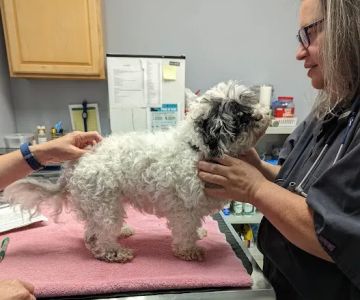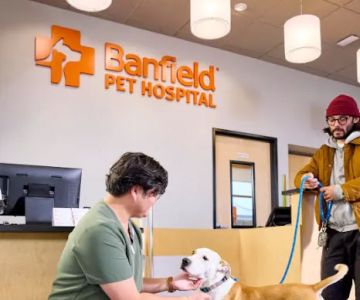Identifying Signs of Dehydration in Pets and Effective Treatments
As a pet owner, one of the most important responsibilities is ensuring that your furry friends stay healthy and hydrated. Just like humans, pets are susceptible to dehydration, and it can happen faster than you might expect. I’ve had my fair share of scares with dehydration in my pets, and through trial, error, and advice from veterinarians, I’ve learned how to spot the signs early and take the necessary steps to treat it effectively. In this article, I want to share my personal experience and guide you through the signs of dehydration in pets and what you can do about it.
1. How Dehydration Affects Pets
Dehydration occurs when a pet loses more fluids than they are taking in. Fluids are crucial for almost every bodily function, from regulating body temperature to helping with digestion. Without enough water, your pet’s organs and systems will start to struggle, and dehydration can lead to serious health problems. This is especially concerning for younger pets, senior pets, or those suffering from underlying health conditions. After seeing my own dog, Max, struggle with dehydration during a particularly hot summer, I realized just how quickly dehydration can escalate if not treated early.
2. Signs of Dehydration in Pets
Knowing how to spot dehydration early can make a huge difference in your pet’s health. Over the years, I’ve become more aware of the key signs to watch for. Here are the most common symptoms of dehydration in pets:
2.1 Dry or Sticky Gums
One of the easiest ways to check for dehydration is by examining your pet’s gums. If their gums are dry or sticky instead of moist and shiny, it could indicate that they are dehydrated. Gently press on their gums and let go—if the color doesn’t return to normal within a few seconds, it’s a sign that your pet might be dehydrated. I noticed this in my cat, Whiskers, when she had been sick for a few days, and it was an early warning that prompted me to act quickly.
2.2 Lethargy and Weakness
Dehydrated pets often feel exhausted and may not have the energy to play, walk, or even eat. If your pet is unusually sluggish or showing signs of weakness, it could be a symptom of dehydration. I remember when Max refused to get up from his favorite spot on the couch one afternoon, which was very unlike him. I immediately started offering him water more frequently and kept an eye on him, which helped restore his energy levels in no time.
2.3 Sunken Eyes
Sunken or dull-looking eyes are another serious sign of dehydration in pets. When a pet’s body is dehydrated, their skin and organs lack the necessary fluids to function properly, which can cause their eyes to appear sunken or dull. I noticed this in Whiskers during a particularly hot week when she wasn’t drinking enough water. Her eyes had a lackluster look, which was my first clue that she might be dehydrated.
2.4 Loss of Skin Elasticity
One of the simplest tests to check for dehydration is the skin tent test. Gently pull up on your pet’s skin and release it. If the skin doesn’t spring back to its normal position right away, your pet may be dehydrated. This test is especially helpful in cats and dogs with short fur. I’ve used this test many times with Max, and it has been a quick and effective way to assess his hydration status.
2.5 Reduced Appetite and Drinking
A noticeable reduction in your pet’s appetite or drinking habits is another sign that something might be wrong. If your pet suddenly stops drinking water or eating their food, dehydration could be the underlying cause. Max’s lack of interest in food was one of the first red flags that pointed me toward dehydration as the cause of his discomfort.
3. Effective Treatments for Dehydration in Pets
Once you’ve identified that your pet might be dehydrated, it’s important to act quickly to restore their hydration levels. Here are some of the most effective treatments for dehydration in pets that I’ve found to work well.
3.1 Providing Fresh Water
The most obvious and effective treatment for dehydration is to ensure that your pet has access to fresh, clean water at all times. Sometimes, pets need a little encouragement to drink. I’ve had success with offering Max water from a different bowl or even using a pet water fountain. The sound of running water can be particularly appealing to some pets. If your pet refuses to drink, try adding a little bit of low-sodium chicken broth to the water to entice them.
3.2 Oral Rehydration Solutions
If your pet is dehydrated but still drinking, you can offer an oral rehydration solution to help replenish lost electrolytes. These solutions are often available at pet stores or through your veterinarian, and they can be a life-saver in treating mild dehydration. I used an electrolyte solution with Max when he was recovering from dehydration, and it helped him get back to normal within a day or two.
3.3 Subcutaneous Fluids
In more severe cases of dehydration, especially if your pet isn’t drinking enough water, your veterinarian may recommend administering subcutaneous fluids. This treatment involves injecting fluids just under the skin to rehydrate the body. Although this procedure sounds intimidating, I found that it’s relatively painless and can be done at the vet’s office. It was incredibly helpful when Max was severely dehydrated after a stomach bug, and it helped him recover quickly.
3.4 Vet Visits for Severe Cases
If your pet shows severe signs of dehydration, such as vomiting, diarrhea, or collapse, it’s important to seek veterinary care immediately. A vet will assess your pet’s condition and may use intravenous fluids or other medical treatments to stabilize them. It’s essential to be proactive and take your pet to the vet if dehydration becomes serious, as it can lead to more serious conditions like organ failure.
4. Preventing Dehydration in Pets
While it’s important to know how to treat dehydration in pets, prevention is always better. Here are some steps I take to ensure that my pets stay hydrated:
4.1 Keeping Water Accessible
Ensure your pets always have access to fresh water, especially during hot weather or after exercise. I make sure to check their water bowls multiple times a day and change the water frequently to keep it fresh. If you’re going on a trip, be sure to bring water with you to offer them during travel breaks.
4.2 Monitoring Their Diet
Some pets may get additional hydration from wet food. I’ve noticed that my cat Whiskers drinks more water when she eats wet food as opposed to dry kibble. If your pet doesn’t drink enough water on their own, adding wet food to their diet may help keep them hydrated.
4.3 Keeping the Environment Cool
During hot weather, it’s crucial to keep your pets cool and comfortable. Always provide them with a shaded area to rest in, and avoid taking them outside during the hottest parts of the day. I’ve found that keeping the house well-ventilated and using cooling mats helps my pets stay at a comfortable temperature.
In conclusion, understanding the signs of dehydration in pets and taking quick action can prevent severe health issues. Always keep an eye out for early warning signs, and don’t hesitate to seek professional help if necessary. Keeping your pets hydrated and healthy is one of the most important aspects of responsible pet care, and with the right knowledge and precautions, we can keep them happy and well-cared for. For more detailed guidance on pet care, I recommend consulting with professionals at Hidden Brook Veterinary.
OLD Keywords-31: dehydration in pets, signs of dehydration, pet hydration, treating dehydration in pets, oral rehydration solution for pets, dehydration treatment for pets, pet care tips, hydration in pets, subcutaneous fluids for pets, keeping pets hydrated SEO Title: Identifying Signs of Dehydration in Pets and Effective Treatments SEO Keywords: dehydration in pets, signs of dehydration, treating dehydration in pets, oral rehydration solution, subcutaneous fluids for pets, keeping pets hydrated, pet care, hydration in pets SEO Description: Learn how to identify signs of dehydration in pets and discover effective treatments to ensure your pet stays hydrated and healthy. Prevent dehydration with simple steps and expert advice.










